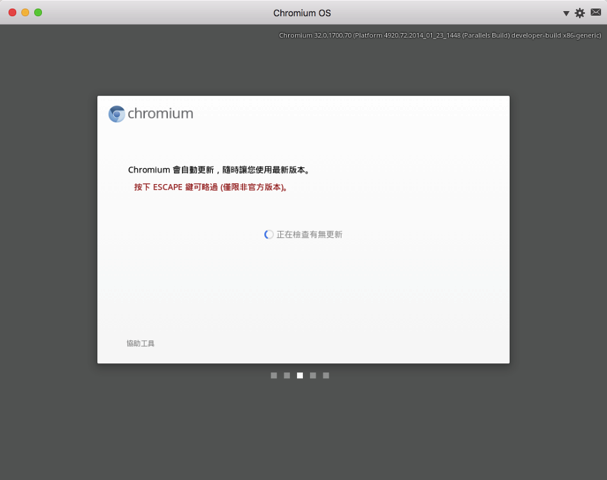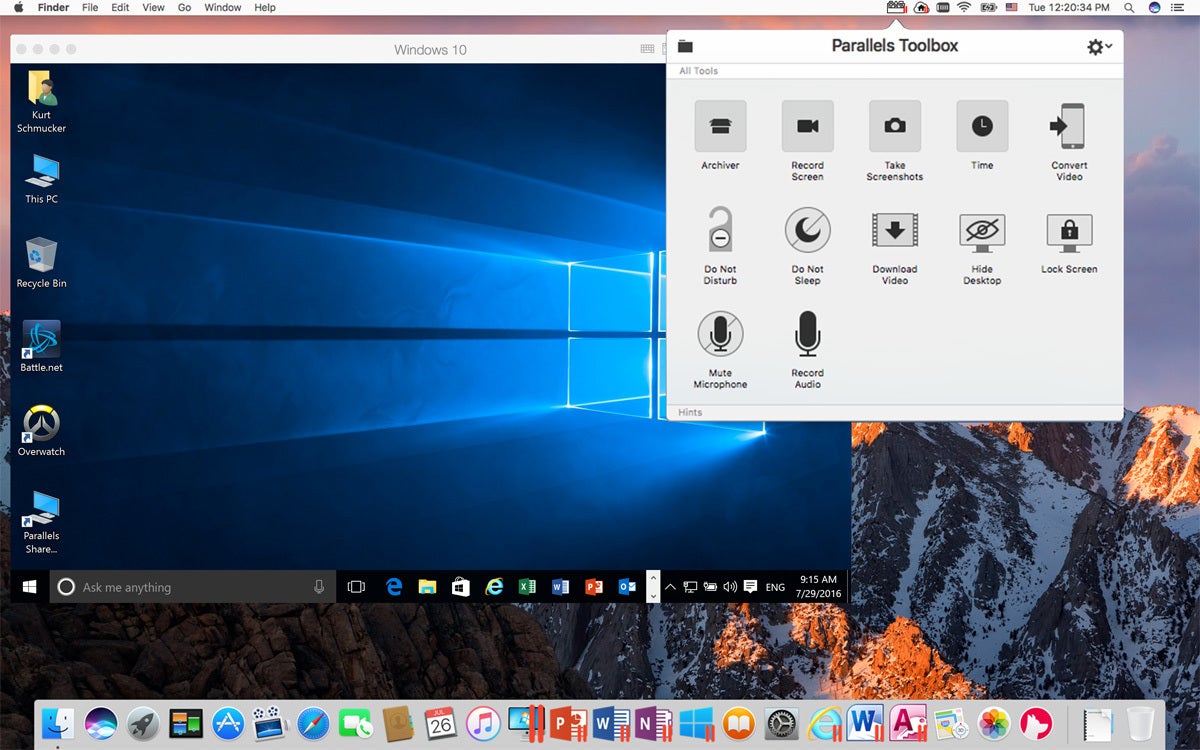Parallels is easily the best virtualization software on the Mac, and earlier this year, they quietly added a new app called Parallels Desktop Lite to the Mac App Store—and unlike its cousin, it’s free to download. The catch: if you want to use Windows virtual machines, you’re going to have to pay for a $60 a year for a subscription.
This page gives instructions on installing Windows on your Mac for the first time to use with Parallels Desktop Lite. You can also: Import an existing virtual machine from other Parallels Desktop editions. Parallels for MAC free. download full version is an amazing that deals with simple user interface and easy to use. It relieved the advanced form after this brief timeframe and furthermore, that is new to work area virtualization pc programming for Mac PCs. Parallels Desktop Lite (com.parallels.desktop.appstore) is a Mac software application that has been discovered and submitted by users of Aploader. The latest version that our users have reported running on their systems is Parallels Desktop Lite 1.1.0. Parallels Desktop for Mac Pro Edition [Download] Aug 21, 2017. By Parallels Desktop for Mac Pro Edition. Mac Download. $99.99 $ 99 99. Parallels Desktop 8 for Mac. 2012 Leaf Draft Day Black. Software Delivery Method. Download; CD/DVD; Software Operating System. Linux; Macintosh OS; Microsoft Windows; Actor. Parallels Desktop 9 Switch to Mac Edition lets you move from PC to Mac easily and confidently. Automatically move all your programs, files, documents, photos, music, and your Internet browser favorites—everything that's on your current PC—to a Mac using the Parallels Wizard.

Parallels recently launched Toolbox for Mac which offered a number of system tools from a handy drop-down menu. Frankly, when the first Toolbox was released, it offered little more than what was. Sometimes, Mac users need to run Windows software. Maybe there’s a program you need for work that doesn’t offer a Mac version, or maybe you occasionally need to test websites in Internet Explorer. Whatever you need Windows for, Parallels is the best tool for the job.
But the program itself is completely free otherwise, meaning if you want to create Linux, Chromium OS, or even macOS virtual machines, you don’t need to pay a dime.
Should I Use Parallels Lite, or the “Full” Version of Parallels?
So how it Parallels Desktop Lite different than Parallels Desktop? Parallels outlines all of the differences here, if you’re curious—there are a few limitations related to Mac App Store sandboxing. Other than that, the main difference is that Lite is free for anything except Windows virtual machines. If you want to run a Windows virtual machine, you’ll need to pony up $60 annually.
How does that compare to Parallels Desktop for Mac, the “full” version of this software? Well that product currently costs $70, and is yours as long as you can keep it running. Parallels versions typically stop running every couple of macOS releases, after which you’ll need to either stick to an older host operating system or pony up $50 for an upgrade license. Assuming you need to upgrade every two years, which is roughly consistent with our experience, the two pricing plans are about that same.
But that’s only if you want to run Windows. If your interest in virtual machines lies entirely on the Linux and macOS side of things, Lite is without question the better deal, because you can’t beat free.
Getting Started With Parallels Desktop Lite
Start up Parallels Lite for the first time and you’ll see the Parallels Wizard, which makes setting up or adding virtual machines simple.
There are three main options here. The most prominent points you to download Windows 10 from Microsoft, which will cost you around $120 for Windows itself on top of the Parallels subscription. To the right, you’ll find the option to browse your computer for any installation images on your computer. Below these two prominent options, you’ll see quick tools for downloading several other operating systems, including:
- Chromium OS (the open source version of Chrome OS)
- Ubuntu 16.04
- Fedora 23
- CentOS 7
- Debian 8
Let’s get started with setting up a couple of these installers, then move on to setting up macOS in a virtual machine.
Installing Linux or Chromium OS in Parallels Desktop Lite
Click any of the operating systems at the bottom of the wizard and you’ll see more information about them.
Click the “Download” button and Parallels will begin the downloading process.
How long this takes will depend on the speed of your internet connection, but for me downloading Chromium OS only took a few minutes. When it’s done, you can log into your Google account and start using Chromium OS right away.
It seems like Chromium OS doesn’t sync over settings from a Chromebook, which is disappointing, but it’s still nice to have access to this system for the occasional test.
I repeated the process for Ubuntu, just for good measure. It was just as simple, and I was using the operating system in no time.
The version of Ubuntu offered is 16.04, which is the most recent Long Term Support version of that Linux distribution. I tried manually installing the more recent 17.04, but had trouble getting Parallels Tools up and running. Your mileage may vary, but in my humble opinion life is a lot easier if you stick to the built-in wizard installers.
Install macOS in Parallels Desktop Lite
If you want a Mac inside your Mac, you’ll first need to head to the Mac App Store. Search for the macOS version you want to install, then click the “Download” button.
A caveat: the Mac App Store will not download a version of the OS older than what you’re currently running. This means that you cannot create a virtual machine for older versions of macOS unless you have some other means of finding the installers. You can, however, easily download newer versions of macOS in order to test them without installing, which is nice.
Once the installer is downloaded, it will open.
Parallels For Mac Lite Balloon
Go ahead and close this with Command+Q—we don’t want to re-install our operating system. Head back to the Parallels Wizard, which you can find by clicking the Parallels button in the menu bar, then clicking “New.”
Click “Install Windows or another OS from a DVD or image file” and you should see macOS Sierra as an option (if not, click “locate manually” to give Parallels permission to see the rest of your file system.)
Click “Continue” and you’ll be asked about storage space.
Click “Continue” after checking that you have enough room, then give your virtual machine a name and choose a location.
Parallels For Mac Lite
Click “Continue” and eventually the installer will launch.
Exciting! Continue through the steps as prompted—you’ll install macOS on your newly created virtual hard drive, and the machine will re-boot a couple of times. You can leave this running in the background and work on something else. Eventually you’ll be prompted to choose a language and create an account, after which you’ll have full access to macOS in a virtual machine.
You can now use macOS in your virtual machine! There’s just one thing left to do: install Parallels Tools, so that the virtual machine’s resolution will change when you re-size the window, among other integrations. To get started, click the “!” icon at top-right, then click “Install Parallels Tools.”
This will connect a virtual disk with the installer to your virtual macOS machine.
Run the installer, then re-start your virtual Mac, and you’re all set up!
This is a lot easier than installing macOS Sierra in VirtualBox, isn’t it? And the price is the same. Enjoy!
READ NEXT- › How to Use Pipes on Linux
- › Why Does USB Have to Be So Complicated?
- › What Should You Do If You Receive a Phishing Email?
- › Why Do You Have to Log In to Your Home PC, Anyway?
- › The Best New Features in Android 10, Available Now
Note: While the software is classified as free, it offers in-App Purchases.
Performance
- Up to 80 percent faster application launch.
- Up to 30 percent faster suspend operation on APFS partition.
- Up to 130 percent more frames per second in Shared Camera.
Linux support
- Install Ubuntu 18.04, Fedora 28, and Linux Mint 19 in virtual machines right from Parallels Desktop.
- Support for mmap() in Linux Shared Folders.
- New pre-configured virtual machines with Debian GNU/Linux 9 and CentOS 7.
- Resolves an issue with Parallels Tools not installing in openSUSE Leap 15 and Ubuntu Linux.
- Resolves an issue with Parallels Tools not working in Linux virtual machines with X Server 1.20.
- Resolves an issue with Ubuntu 18.04 virtual machines periodically crashing or locking up.
- Resolves an issue with Ubuntu 18.10 virtual machines not installing.
- Resolves an issue with not being able to mount the same shared folder twice in a Linux virtual machine.
Graphics
- The new 'Auto' mode for graphics allows Windows to use more than 2 GB of Mac system memory for graphics, while allowing Windows applications to use it when possible.
- Support for OpenGL 3.x in Windows virtual machines.
- Improved the way a virtual machine is displayed on 4K+ monitors:
- reduced the system and graphics memory consumption;
- increased performance when 3D acceleration is turned off.
- Improved the way a virtual machine is displayed on multiple monitors when the macOS 'Displays have separate Spaces' option is turned off.
Ready for macOS 10.14 Mojave
- Parallels Desktop Lite supports Dark Mode.
- Use the virtual machine’s Edit menu to insert pictures from your iPhone or iPad into Windows applications.
- Quick Look in Windows has the same functionality as that in macOS.
- Parallels Desktop Lite uses the Mojave technology to take screenshots.
Integration with Mac
- Use your Mac’s camera that supports up to 4K resolutions in a virtual machine
- Use the Touch Bar to work with more Windows applications.
- The size of the virtual machine hard disk (.hdd file) is optimized by means of native Windows defragmentation.
Security
- Backing up a virtual machine with Time Machine has been simplified. Now if you want to add a virtual machine to the backup list or exclude it from this list, just do what you need in the Time Machine preferences.
- Backing up a virtual machine with Acronis True Image has been improved.
Usability

- Easier way to get help from Parallels - click Help > Support Center to access the webpage where you can find the most popular knowledgeable articles, links to the Parallels forums, social media and technical documentation, get personalized support and much more.
- The 'Free Up Disk Space' dialog has been redesigned and simplified. Now you can use it to reduce the amount of disk space occupied by all your virtual machines.
- A paused virtual machine resumes automatically when you drag a file to its window.
- As most of Windows customers have switched from Windows 8 to Windows 10, the 'Enable swipe from edges' option is disabled by default in order not to confuse users.
- Windows Maintenance feature has been improved.
- For new virtual machines, the SmartGuard backup functionality now keeps 3 snapshots by default (not to occupy additional disk space).
- The Resource Monitor has been redesigned. Use it to check how much CPU and memory is consumed by your Mac and all virtual machines.
- Monitor the virtual machine CPU usage in the virtual machine status bar.
- When you click a macOS notification that a technical data report has been sent, the report ID is automatically copied to the clipboard.
Support for keyboard layouts
- Improved support for the German keyboard layout.
- Improved support for the Japanese keyboard layout.
- Added support for the Brazilian Portuguese keyboard layout.